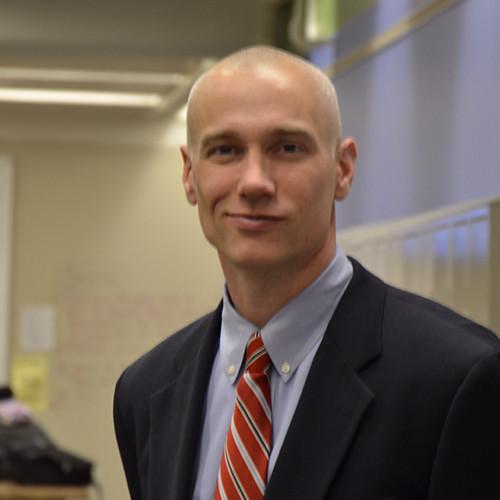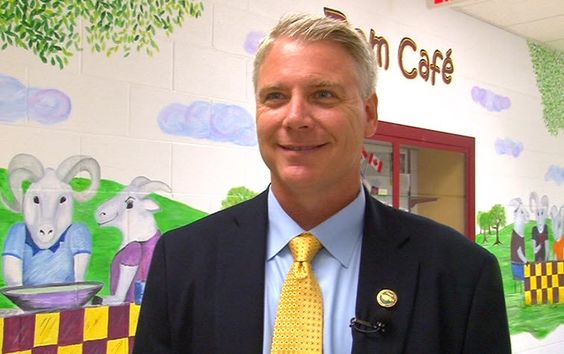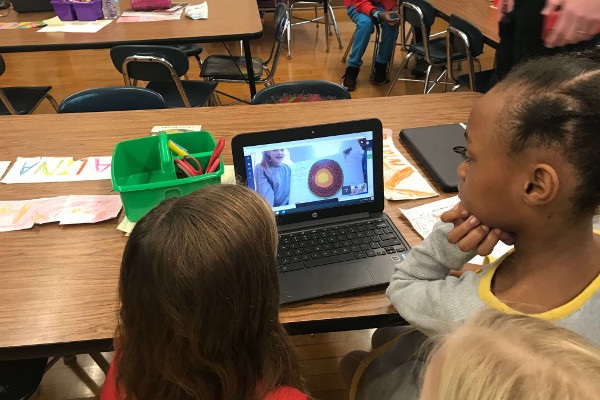Getting students to take a more active role in their learning experience is the goal of many STEM teachers. Ohio educator Jeff McClellan is promoting a way to do just that. McClellan says the SOLE method is easy to implement in any classroom, from elementary through high school, and has been used in adult education settings. All that is needed is a question, some internet-enabled devices for research and a short period for sharing that research. McClellan shares with us the details of this learning method:
Q: Tell us about your background in education.
 A: In 2008, I became the founding head of MC2 STEM High School in Cleveland. Since then, I have served as a consultant for a number of initiatives nationally and internationally.
A: In 2008, I became the founding head of MC2 STEM High School in Cleveland. Since then, I have served as a consultant for a number of initiatives nationally and internationally.
For the past four years, I have been leading a startup team of educators, researchers and developers focused on scaling student-centered inquiry. Inspired by Dr. Sugata Mitra’s concept of the Self-Organized Learning Environment (SOLE), we have developed tools and techniques that support the systematic implementation of SOLEs in classrooms everywhere.
In general, today’s student-centered, inquiry-based approaches require extensive preparation and special teaching modules that are cumbersome to insert into a busy class schedule. In contrast, SOLEs are completed in a single class period by one teacher using a question aligned to state standards. These SOLE sessions easily fit into any educational environment.
The concept of SOLE was introduced by Mitra in his award-winning TED Talk (2013). Each SOLE session has three parts: asking a Big Question, conducting collaborative investigation and holding a review phase in which students present what they’ve learned. This methodology is a simple, yet powerful, way to create a personalized student experience in which students become their own teachers. My current goal is to have 250,000 educators capable of running a SOLE by the end of 2021.
Q: Give us some details on the SOLE concept.
A: Every SOLE session starts with a Big Question; these do not have a single right answer and lead students to other questions that spark curiosity and debate. The teacher begins a SOLE session by introducing the Big Question and some simple ground rules. Our website and iPhone app include thousands of questions aligned to Common Core and state standards to help teachers find SOLE questions they can use to cover content from their curriculum.
Next, students collaborate in groups of three to four, researching the Big Question on one or two internet-enabled device(s). While researching, each group prepares a creative presentation to share what they find with the rest of the class.
During the review phase, each group presents its discoveries to the class. Presentations run no more than 2 minutes and include citations as appropriate. In addition, students are encouraged to use creativity — posters, skits, songs or whatever else students might choose. After each presentation, the audience is encouraged to ask follow-up questions and make connections among groups. Here is a quick video that will help teachers get started: How to SOLE
We encourage teachers to use SOLE once a week, or every other week, with a different question each time. We are finding that by the third SOLE session the process has taken off for both students and the teacher.
In addition to in-person support, we launched an online platform to help educators try SOLE. Our mobile app and website are designed to make things easy, with:
- 7,000+ standards-aligned questions.
- Curated rubrics and student organizers.
- A simple process for creating lesson plans.
- Tools for collecting student work.
- A guided reflection process.
- Free CEUs from Cleveland State University.
Q: Can this teaching method be used in all grades?
A: Absolutely! We have teachers at all grade levels using StartSOLE. The links below provide an overview of the process for different age ranges:
Q: Have you used it in scenarios with adults?
A: Yes. Here is a link to an overview of the process for adults: Higher Education / Adult Overview
StartSOLE has been incorporated into a community health worker-training program in Ohio and is being used by the College of Education and Human Services at Cleveland State University in its pre-service educator programs.
We’ve also seen many examples of StartSOLE being used to facilitate professional development for active teachers. Some funding is available to support these PD sessions; contact us if you’d like to set up one for your school.
Q: What are the advantages of SOLE?
A: There are several advantages:
- SOLE is simple: It doesn’t require a change of classroom schedule or one laptop per student. Teachers need just a good question, a few internet-enabled devices and 40 to 60 minutes of class time. StartSOLE’s resources are aligned to standards, so you can try it any time.
- SOLE works: Research indicates that exposure to SOLE in as little as one class period per week strengthens students’ skills in communication, presentation, leadership, teamwork, research and use of technology (Stiles and Weisblat 2017). This study also indicates that teachers who facilitate SOLE feel less pressure to know all of the answers, which made them more curious and open to learning with their students.
- SOLE is, and always will be, free to educators: The StartSOLE app, all of our resources, videos and other content are free and will always remain free for teachers.
Q: Who’s using SOLE?
A: More than 9,800 educators from about 2,500 schools in 90 countries have used StartSOLE. Most of our users are teachers or school leaders in Ohio. Here is a sample of what a couple of them shared about their experience:
 “One primary goal for Oregon City Schools (in Lucas County, east of Toledo) has been to train our teachers on methods to become more of a coach/facilitator of student learning rather than simply the provider of content. Finding this type of training has been difficult until the SOLE training was offered to us. The feedback has been tremendous, and teachers are instantly implementing the concepts with students and spreading the word. This training came at the right time for our district, helping to move along the type of classroom transformation we are striving for.” — Hal Gregory, superintendent, Oregon City Schools
“One primary goal for Oregon City Schools (in Lucas County, east of Toledo) has been to train our teachers on methods to become more of a coach/facilitator of student learning rather than simply the provider of content. Finding this type of training has been difficult until the SOLE training was offered to us. The feedback has been tremendous, and teachers are instantly implementing the concepts with students and spreading the word. This training came at the right time for our district, helping to move along the type of classroom transformation we are striving for.” — Hal Gregory, superintendent, Oregon City Schools
“My students just took the second NWEA in reading. I was nervous about how they would do, because we try to do three SOLEs a month, and I am starting to get some push-back. … It seems like they don’t think we are doing enough ‘work’ because we don’t do a lot of worksheet-type projects. We compared their fall NWEA score to today’s winter NWEA — 89% of my fourth-graders increased their score. My ESL student, who in the fall was the lowest score in the class, went from a 157 to a 195! My special ed students showed the largest gains, both increasing 14 points. (And) 78% of my fifth-graders increased their scores, with the largest gains again in special ed.” — Teacher, Cleveland Metropolitan School District
You can also find many other examples of what people are saying about StartSOLE by checking us out on Twitter.
Q: How do you collect feedback and assess implementation.
A: The teacher’s role during a SOLE session is to act as a facilitator and observer, so data collection is an integral part of StartSOLE’s design. Educators can capture photos and videos to document students’ work in groups, as well as upload students’ final work and presentations for archival purposes.
We use this data to help refine our features, make the experience easier for teachers and offer more support where needed. Each SOLE session is reviewed by our team, and great exemplars are shared with our community on social media, with permission.
Q: Have you received funding to spread this concept?
A: The DBJ Foundation in Cleveland has been funding our startup, enabling us to create tools that will always be free for educators. We are partnering with several entities in exploration of various funding opportunities; recently, we collaborated with the North Point Educational Service Center on a grant from the Martha Holden Jennings Foundation to help spread SOLE through the educational service centers in northern Ohio.
We are actively looking for opportunities to partner with local, regional, national and international partners to continue to increase our capacity and impact.
Q: How can educators find out more about SOLE?
A: Sign up for a StartSOLE account today or contact me, Jeff, to get more information about bringing StartSOLE to your school or community.
